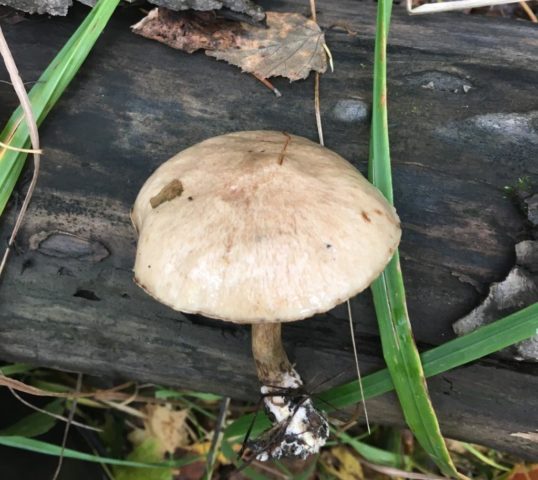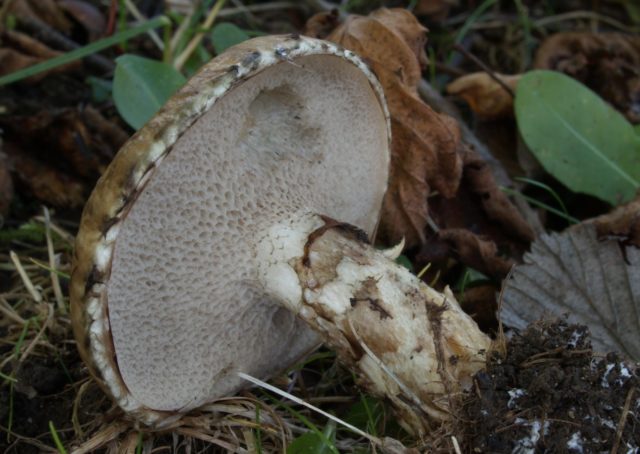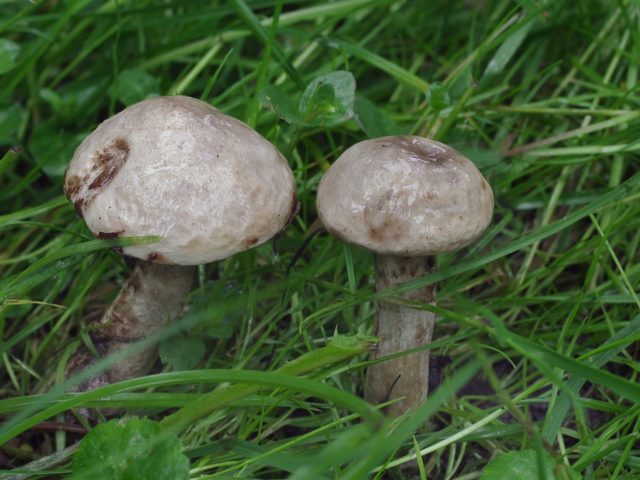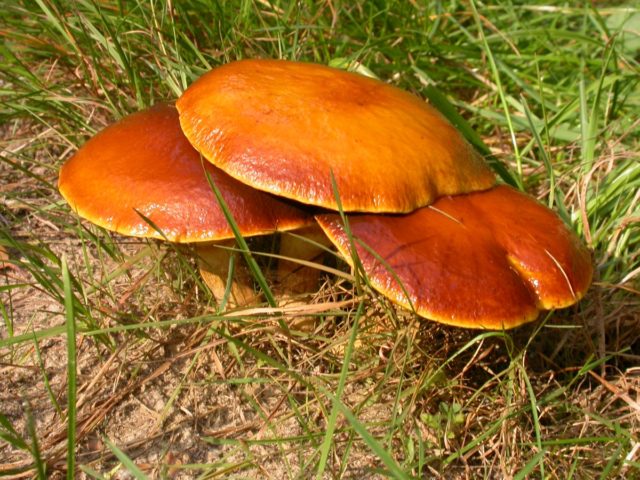Content
Greyyear is a mushroom that is not found in every corner of Russia and is distinguished by its excellent taste. This type is used to prepare various dishes and snacks for the winter. Mushrooms are a specific product, so each variety should be carefully studied so as not to be confused with others, and to be used correctly for food.
What a gray oiler looks like
Gray oiler (Suillus aeruginascens) belongs to the category of edible mushrooms, which do not differ in bright appearance. Its other names: blue oiler, tubular gray larch, gray larch oiler.
Due to its nondescript color, this view does not attract attention. In fact, the taste of the fruiting body is revealed during cooking, filling the space with a pleasant mushroom aroma.
Description of the hat
The gray oiler has a pillow-shaped cap, in the center of which a tubercle usually forms. Its size can reach 100 mm in diameter. The surface is slimy to the touch, which is evident from the characteristic shine. The color is light gray, but it can have a greenish or purple tint.
On the reverse side of the cap, a tubular layer is noticeable, which can be gray-white or gray-brown in color. The pulp is whitish, when broken it quickly turns blue.
Leg description
The leg has a dense structure, it reaches 10 cm in height. The young mushroom has a wide felt ring, which disappears at the stage of maturity. The color of this representative can be yellowish, brownish or pale gray, with an olive and purple tint.
Edible Greyish Oiler Or Not
As you can see from the description, gray oiler is an edible mushroom that belongs to the 3rd category. It can be used both for cooking and frying, as well as for preparing winter pickles and pickles.
Why is gray oil can useful?
The benefits of gray oil are indicated by their chemical composition. In addition to water (the volume of which reaches 90%), this species contains many useful substances: among them there are rare trace elements, vitamins and polysaccharides. The study of the composition of these mushrooms and its effect on the human body continues. In terms of nutritional value, gray boletus is practically indistinguishable from porcini mushrooms. They contain amino acids that can completely replace animal protein. And the vitamins of the PP group in them are not less than in the liver and fish.
In addition to the above advantages, there are some features of the mushroom:
- The caps contain antibiotic compounds, as well as immunostimulant substances. Therefore, with the help of representatives of this species, the body is not only able to fight microbes and infections, but also significantly increase the immune qualities.
- Lecithin is present in mushrooms, which helps to stabilize hormonal levels and increase hemoglobin levels.
- The oily substances contained in the fruit bodies are preserved when salted and exposed to high temperatures: they are the main component in the treatment of gout, the normalization of the nervous system in depressive conditions and chronic fatigue.
- The beta-glucans in the product prevent the risk of developing and growing cancer cells.
In folk medicine, raw materials are used for the preparation of medicinal products:
- With the problems of the musculoskeletal system, blood vessels and heart, tincture of mushrooms, which is also successfully used for the treatment of migraines, will help to cope.
- Butter sauces help the body recover after surgery, so even doctors advise them to use them.
- The extract from the fruiting bodies has long been used to treat non-healing wounds, osteochondrosis and sciatica.
Where and how does a gray oiler grow
The first gray larch boletus can be found in June. If the weather is dry and cool, then the harvest is harvested in early July. The fruiting of this species ends in late September - early October.
Butterlets prefer sour soil, they can be found near roads and on the edges of pine and larch forests, in plantings and parks. They often grow in groups, but lonely specimens can also be found.
The habitat of representatives of this species extends to the Far East, but in the European part of Russia they are rare guests, although they are quite amenable to growing in cultural plantings of larch.
Like all mushrooms, this species absorbs numerous harmful substances contained in the soil and air. Therefore, the main rule of collection is a clean ecological environment. It is forbidden to cut off fruit bodies near highways, near industrial plants, gas stations, etc.
Doubles of a gray oiler and their differences
The counterparts of the gray oiler include the larch and reddish oiler.
The larch species has an orange or bright yellow cap. Initially, it has a conical shape, but becomes prostrate with age. Its surface is covered with a sticky skin that can be easily removed. The flesh of the fruiting body of the gray oiler is quite dense, has a delicate taste and aroma, reminiscent of an assortment of fruits. The leg is compact, its color is brown-red. The mushroom is edible, it grows in young plantings and larch forests. Families of boletus or single specimens can be found in early June, and the last representatives are easy to find in early October.
The reddish-red oiler is an even rarer species than its gray counterpart. The cap of the mushroom is yellow-orange in color, with red scales stand out on it. The leg is painted in the same color as the cap. The lemon-colored pulp quickly turns red when the fruit body is damaged. The fungus is edible, it grows on calcareous soils. Geographically, it can be observed in Altai, Siberia and the Alps.
How gray boletus is prepared
Gray boletus is great for any kind of culinary processing. They can be boiled and frozen for the winter, made caviar from them, pickled, and salt. The most common options are frying and stewing fresh mushrooms.
Conclusion
Gray oil can is an extremely useful and extremely tasty mushroom. In culinary processing, it is used both for direct cooking and for winter preparations.














